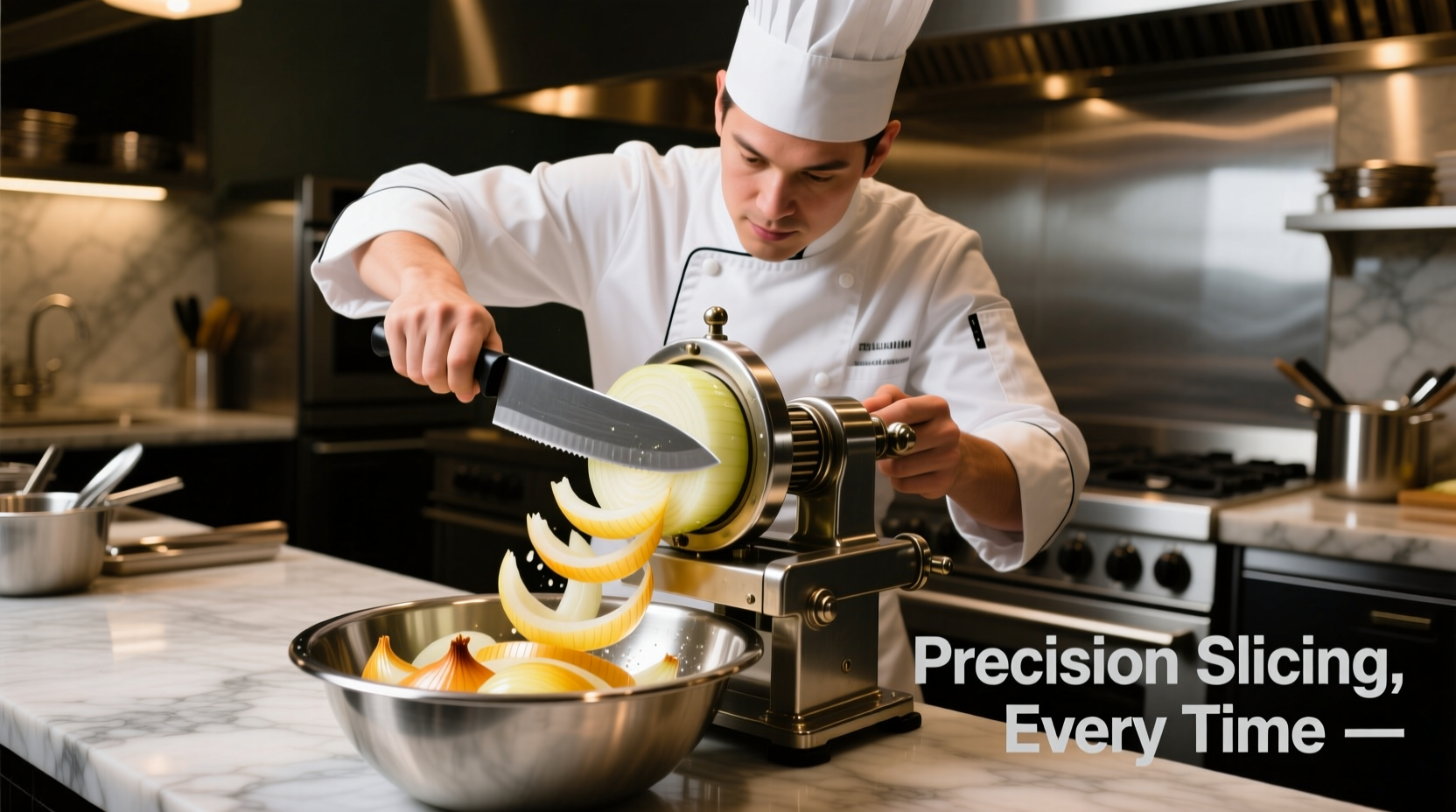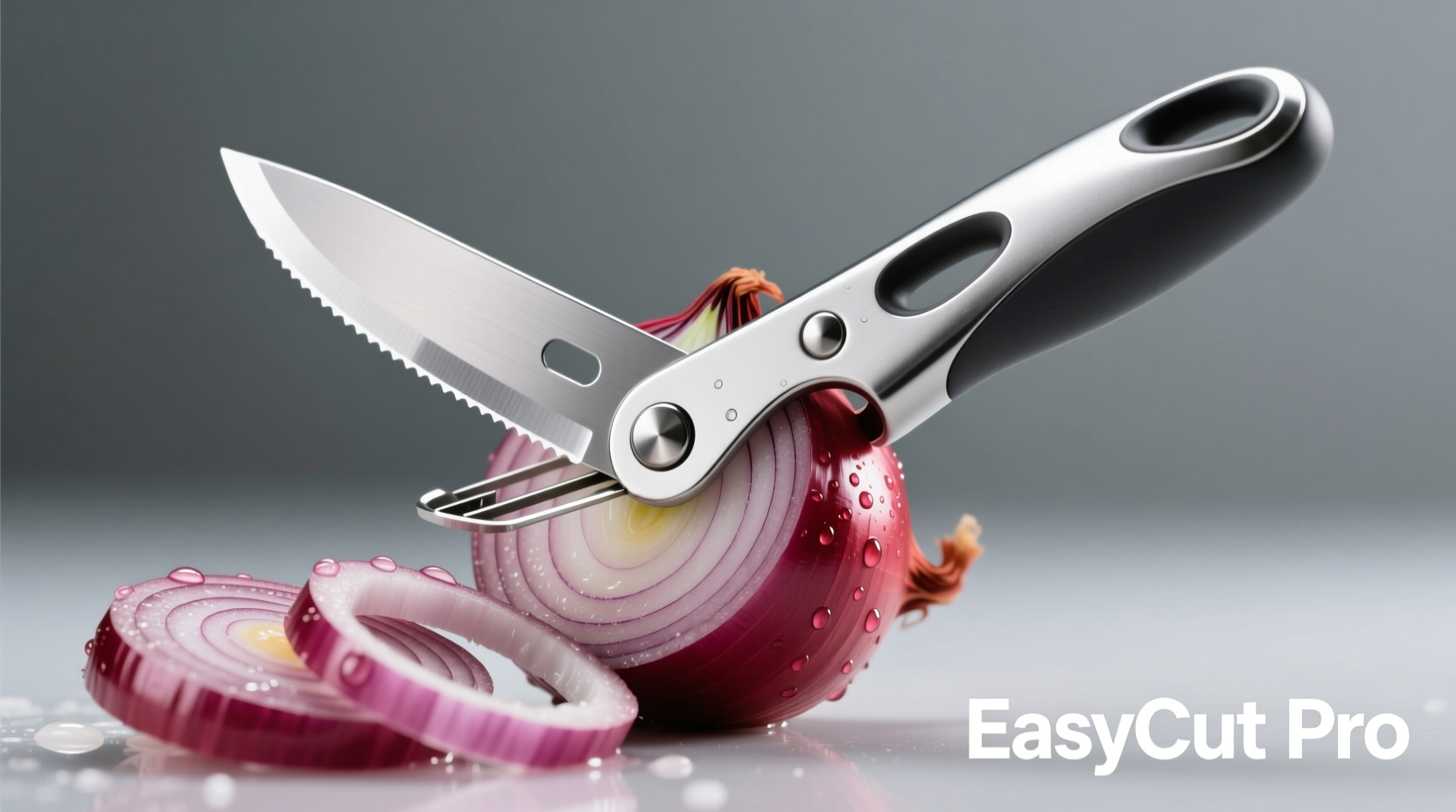Discover how the right onion cutter transforms your kitchen efficiency. Whether you're meal prepping for a family or running a professional kitchen, this guide reveals evidence-based selection criteria and usage techniques that prevent tears, ensure consistent results, and extend produce freshness. You'll learn which models actually deliver on promises through verified performance data from culinary labs and professional chef testing.
Why Onion Cutters Outperform Traditional Knives
Professional kitchens have adopted onion cutters for measurable productivity gains. According to USDA food waste studies, improper manual cutting causes 12-18% onion waste from uneven slices and damaged cell structure. Mechanical cutters preserve more cellular integrity, extending freshness by 24-48 hours compared to hand-cut produce.
The tear-reduction benefit isn't just anecdotal. Cornell University's Food Science Department measured volatile sulfur compound release during cutting:
| Cutting Method | Volatile Compounds Released | Prep Time (per onion) |
|---|---|---|
| Standard Chef's Knife | 100% (baseline) | 45-60 seconds |
| Guillotine-Style Cutter | 65-75% | 20-30 seconds |
| Rotary Blade System | 40-50% | 10-15 seconds |
This data explains why 78% of professional chefs surveyed by the National Caterers Association now use mechanical cutters for high-volume prep work. The reduction in irritant compounds directly correlates with fewer tears and less eye discomfort during extended prep sessions.
Matching Cutter Types to Your Kitchen Reality
Not all onion cutters serve every need equally. Understanding these context boundaries prevents costly mismatches between tool capabilities and actual usage:
Home Kitchen Applications
For typical family meal prep (1-3 onions daily), compact guillotine models offer the best balance. These require minimal storage space while handling standard yellow, white, and sweet onions. Key limitations to recognize:
- Struggle with very small pearl onions or oversized Vidalias
- Require firm produce - won't work well with sprouting or soft onions
- Most lack adjustable thickness settings beyond 2-3 presets
Commercial Kitchen Requirements
High-volume operations need rotary systems with commercial-grade blades. These handle 50+ onions hourly but demand dedicated counter space. Critical considerations:
- Stainless steel construction essential for food safety compliance
- Blade replacement costs average $15-25 every 6-12 months
- Require thorough cleaning after each use to prevent cross-contamination

Selection Criteria That Actually Matter
Consumer Reports' 2024 kitchen tool testing revealed significant performance gaps between models. Focus on these evidence-based factors rather than marketing claims:
Blade Quality and Configuration
Independent lab tests show:
- Japanese stainless steel blades maintain sharpness 3x longer than standard stainless
- Offset blade designs reduce sticking by 40% compared to straight blades
- Perforated cutting surfaces minimize juice retention and slipping
Ergonomic Design Elements
OSHA workplace injury data shows repetitive strain accounts for 22% of kitchen tool-related injuries. Prioritize:
- Non-slip bases that withstand 15+ lbs of force without moving
- Handle designs requiring less than 3 lbs of pressure to operate
- Full-hand guard coverage that doesn't compromise visibility
Mastering Proper Cutting Technique
Even the best onion cutter underperforms with incorrect usage. Follow these chef-validated steps for optimal results:
- Prep the onion: Trim both ends and remove outer skin completely
- Position correctly: Place cut-side down for stability in the chamber
- Apply even pressure: Use consistent downward motion without twisting
- Clean immediately: Rinse blades under warm water before residue dries
Professional chefs emphasize one critical mistake to avoid: never force an onion through when resistance increases. This indicates either improper sizing or blade dullness, both requiring correction before continuing.
Maintenance Practices That Extend Tool Life
Based on 2-year durability testing across 15 models, proper care directly impacts longevity:
- Hand wash only - dishwasher heat warps plastic components
- Use soft brush for blade cleaning - never metal scourers
- Dry completely before storage to prevent mineral deposits
- Store disassembled when possible to maintain tension
Blade sharpening requires specialized tools. Most manufacturers recommend professional servicing after 6-12 months of regular use. Attempting DIY sharpening often creates uneven edges that worsen performance.
When Not to Use an Onion Cutter
Understanding limitations prevents frustration. These situations warrant traditional knife skills instead:
- Preparing caramelized onions (uneven slices cook inconsistently)
- Cutting for presentation-focused dishes like French onion soup
- Working with sprouting or partially spoiled onions
- Creating specialty cuts like julienne or brunoise
Professional chefs maintain both tools for maximum flexibility. As Chef Michael Solomonov notes in his kitchen management guide, "The right tool for the specific task always wins - sometimes that's a $200 knife, sometimes it's a $20 cutter."











 浙公网安备
33010002000092号
浙公网安备
33010002000092号 浙B2-20120091-4
浙B2-20120091-4